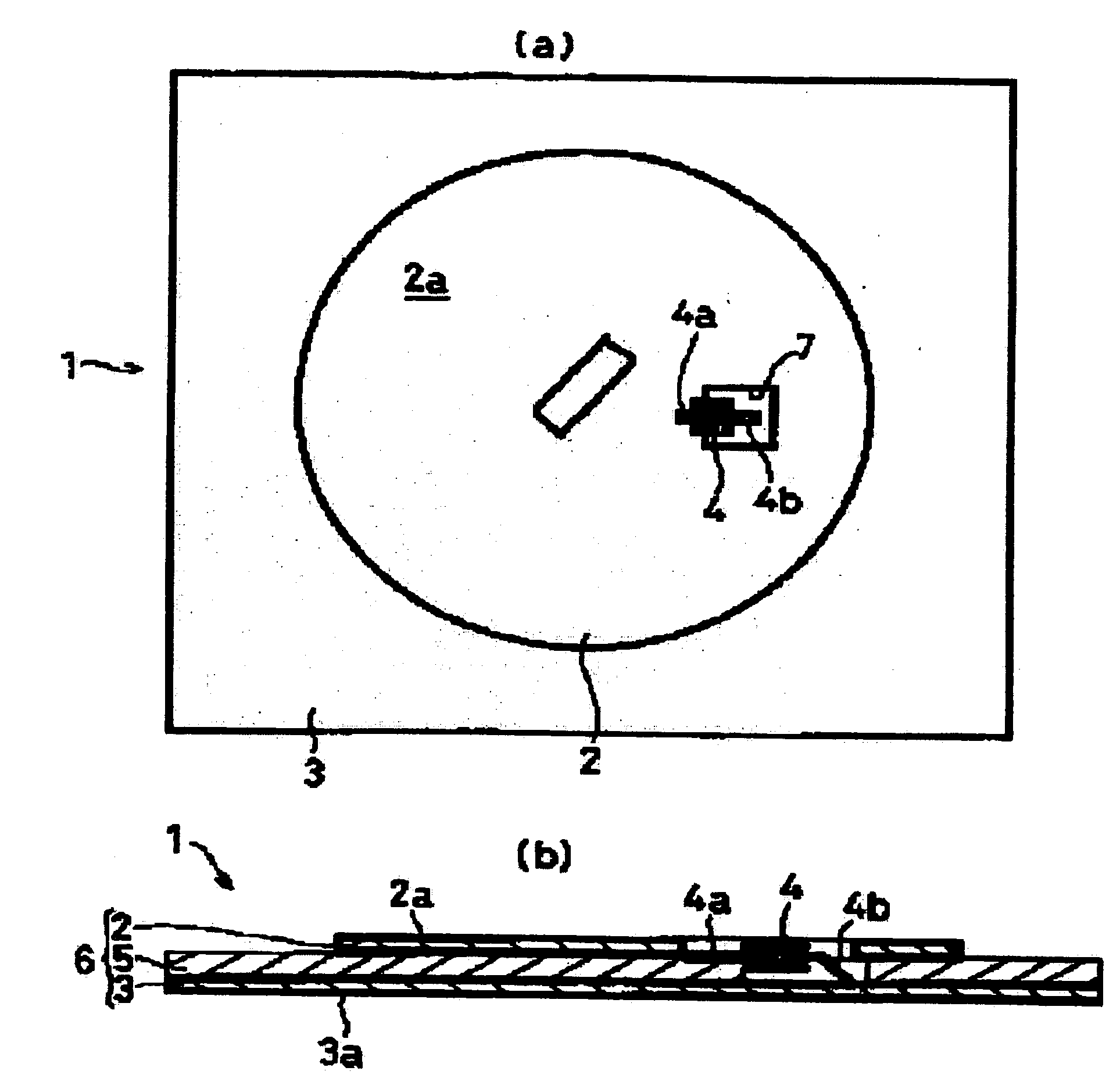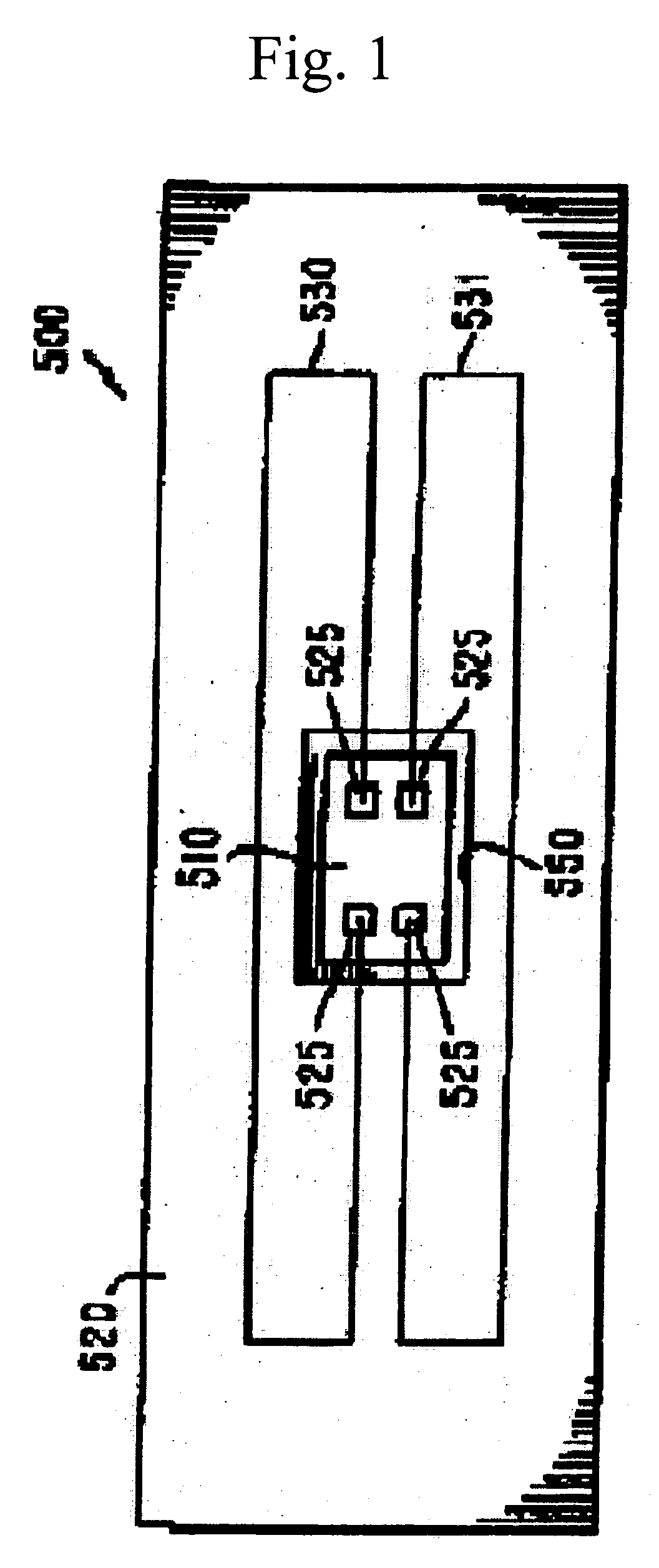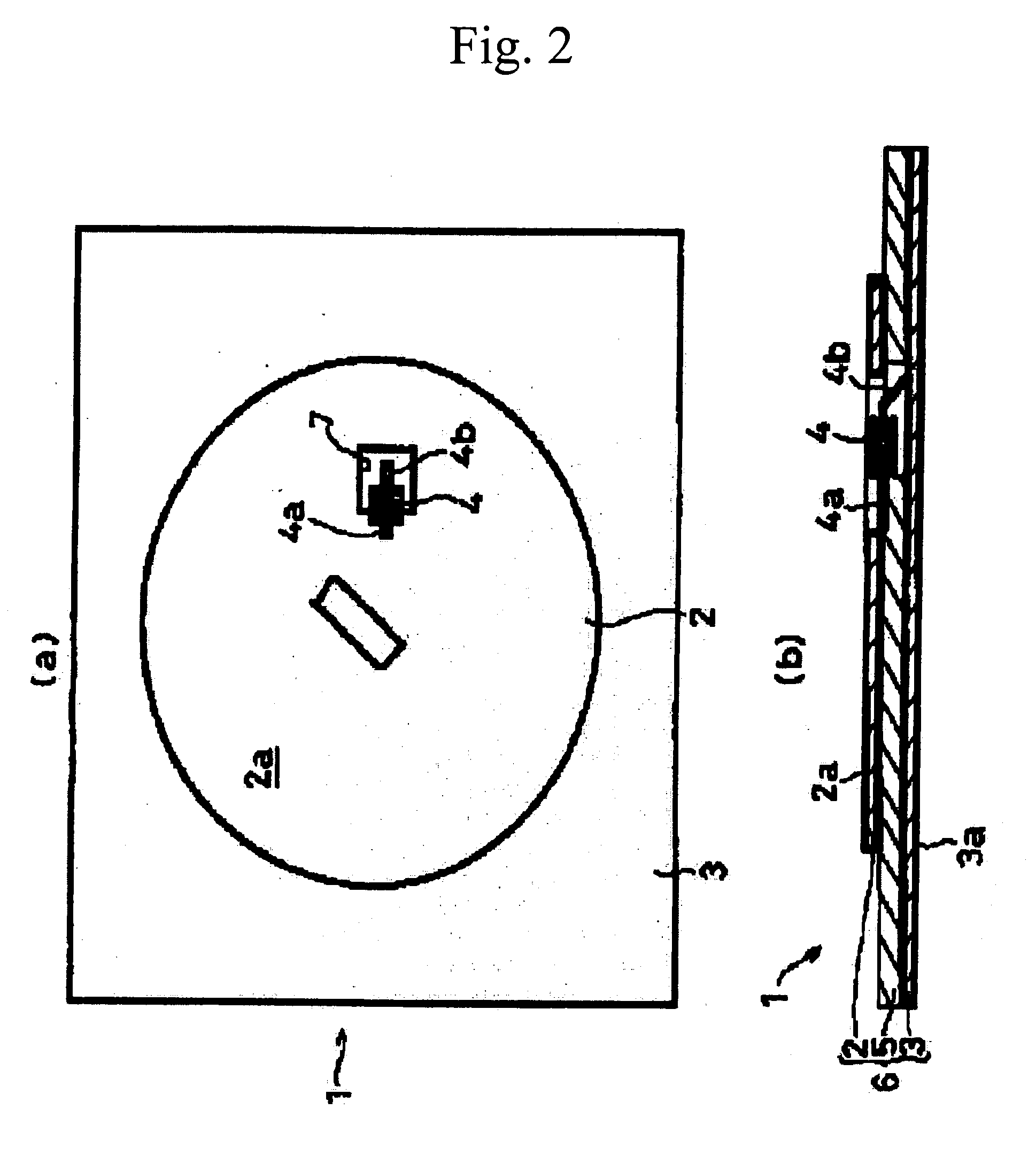RFID tag
a technology of rfid tags and tags, applied in the field of rfid tags, can solve the problems of inability to communicate, failure to operate, and deterioration of characteristics, so as to prevent interference, avoid the effect of deterioration of emission and receiving characteristics due to the effects of the human body and increase the gain
- Summary
- Abstract
- Description
- Claims
- Application Information
AI Technical Summary
Benefits of technology
Problems solved by technology
Method used
Image
Examples
Embodiment Construction
[0034] An embodiment of the present invention is next explained, with reference to the drawings.
[0035]FIG. 3 shows the configurations of a plate-form loop antenna according to the present invention. In FIG. 3, a metal part 11 the surface of which is partially cut-out is wrapped on a dielectric substrate 10, and the power supply position and mounting position of an IC chip 12 are shown in the vicinity of the cut-out portion.
[0036]FIG. 4 shows an example of the layout of a plate-form loop antenna in an RFID tag of the present invention.
[0037] In FIG. 4, the plate-form loop antenna of FIG. 3 is placed inside the RFID tag 13 near the end thereof. FIG. 5 shows an example of the arrangement whereby a 13 MHz band RFID tag is superposed on the RFID of the present invention. FIG. 5(a) is a block diagram showing a lateral view and FIG. 5(b) is a block diagram showing a view from directly above.
[0038] FIGS. 5 (a) and (b) assume that a 13 MHz band RFID tag 20 and the RFID tag 13 have been s...
PUM
 Login to View More
Login to View More Abstract
Description
Claims
Application Information
 Login to View More
Login to View More - R&D
- Intellectual Property
- Life Sciences
- Materials
- Tech Scout
- Unparalleled Data Quality
- Higher Quality Content
- 60% Fewer Hallucinations
Browse by: Latest US Patents, China's latest patents, Technical Efficacy Thesaurus, Application Domain, Technology Topic, Popular Technical Reports.
© 2025 PatSnap. All rights reserved.Legal|Privacy policy|Modern Slavery Act Transparency Statement|Sitemap|About US| Contact US: help@patsnap.com



